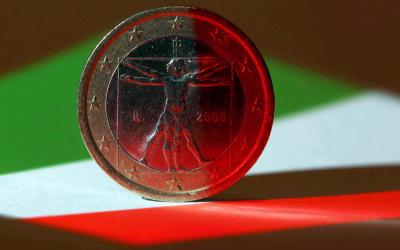Italy 'on path to economic recovery'

ROME -- Economic growth reports in Italy have nourished hope that Italy's slow recovery from recession is at last accelerating with GDP on the rise by 0.8 percent, after a three-year downward trend, thanks to higher consumption, though some commentators accuse Renzi of fiddling the figures to his benefit, according to Istat statistics agency's 2015 report.
The agricultural sector is the one to have seen the biggest increase at 3.8 percent, whilst there are 3,000 more people employed than this time last year and 15 billion euros have been recovered from tax evaders. Renzi stated that these “results have exceeded expectations” and has promised to cut taxes in 2017.
These results, show that the GDP volume is still below the level recorded in 2000 though it shows that Italy headed in a better direction than the past few years. The deficit in 2015 was recorded 2.6 percent, down from the three percent in 2014. The debt in relation to the GDP is in line with government’s financial and economic forecasts, and is the lowest since 2007, turning the clock back to before the economic crisis hit.
The primary surplus (excluding interest payments on the debt) is also down to 1.5 percent, which is the lowest since 2011. “In absolute terms, the debt is -43.101 billion euros, which is a decrease of more that 5.5 billion from last year.”
At the same time, the Italian debt in 2015, stood at 132.6 percent of GDP, the highest since 1995, but a lower figure than the Government forecast of 132.8 percent – in absolute terms it amounted to about 2.17 trillion euros, a record high. The tax burden amounted to 43.3 percent of GDP, which is the lowest since 2011, when it amounted to 41.6 percent, according to the ISTAT report.
In January, the unemployment rate was at 11.5 percent, an unchanged level from last August, whilst the permanent employment estimate for January is up by 0.3 percent. Incidentally, Italy is the leading country in the EU for micro and small artisanal goods businesses according to a study by the General Confederation for Artisanal Goods in Italy, with Le Marche as the leading region.
Certain commentators argue, however, that the information broadcast is only a selection of the most favourable data and leaves out equally relevant information, such as Italy’s GDP increase in comparison to that of other EU countries – with the UK at 2.2 percent, Germany at 1.7, and France at 1.2, and only Greece, Austria and Finland behind Italy.
Another point is that whilst the deficit has fallen to 2.6 percent, the target that was initially agreed with Brussels was 1.4 percent, and they have been able to get away with it thanks to the famous “flexibility”, increasing the ratio by 0.4 percent on the grounds of “structural reforms,” amongst other increases for various expenditures. The tax burden, whilst it fell by 0.3 percent, is still well above the European average of 39 percent, at 43.3 percent.
ch


